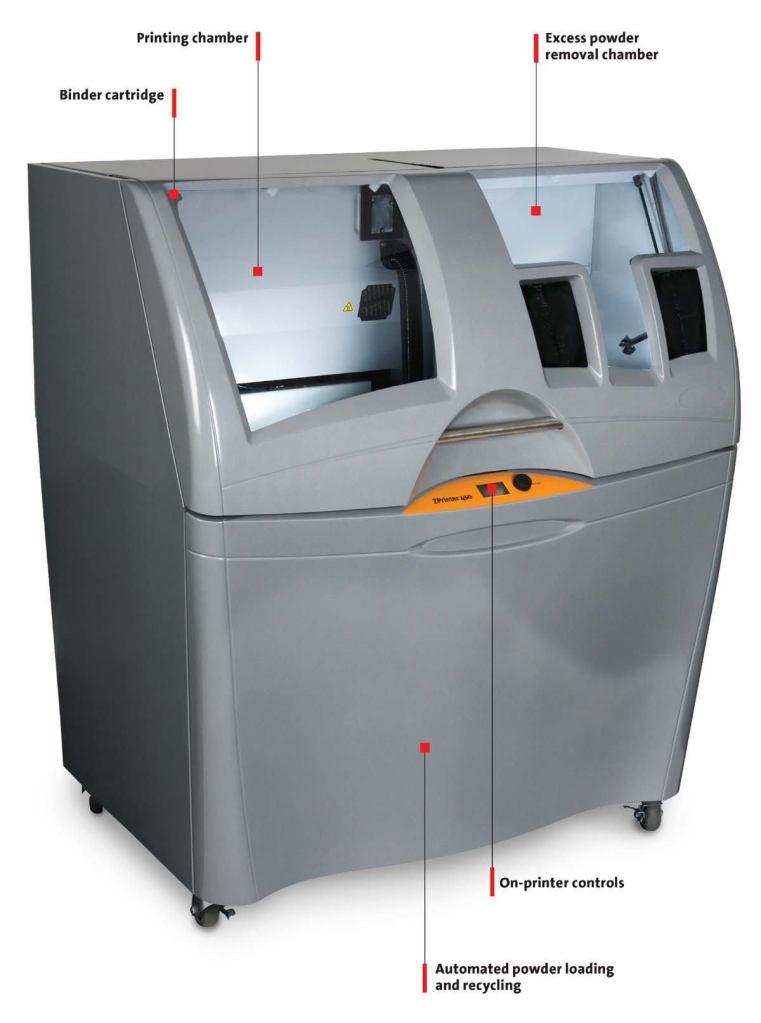3-D ink-jet printers, like the new ZPrinter 450, from Burlington, Mass.-based Z Corp., use a high-performance composite powder alternated with a gluelike binder to slowly build up models layer by layer. The user has a proprietary print driver, called ZPrint, installed on their computer desktop. It parses a standard .stl file into a series of layers, or horizontal slices that can be built up by the plasterlike powder in the printer. Once inside the printing chamber, the layers of powder and binder build up, and two standard ink-jet printer heads apply ink to the perimeter of each layer, so that the model builds up in full color. With another proprietary program called ZEdit, the user can import image files to provide simulated texture—such as images of paving tiles or roofing materials. The result is a faithful model of the original 3-D drawing, with a materials cost of between $2 and $3 per cubic inch.
“Cost has become big factor,” says Kevin Lach, vice president of marketing for Z Corp. “The cost of something is going to drive how you use it. If [a model] is going to cost several thousand dollars, you’re not going to try a lot of things. If it costs 50 to 100 dollars, and it’s already in your office, then it fosters creativity.” Another benefit to the powdered printing process is that in the ZPrinter 450, several items can be printed at once, stacked together so that they fill the print chamber. An extra layer of powder between each piece means they are completely separate once it comes time to remove them from the machine.
